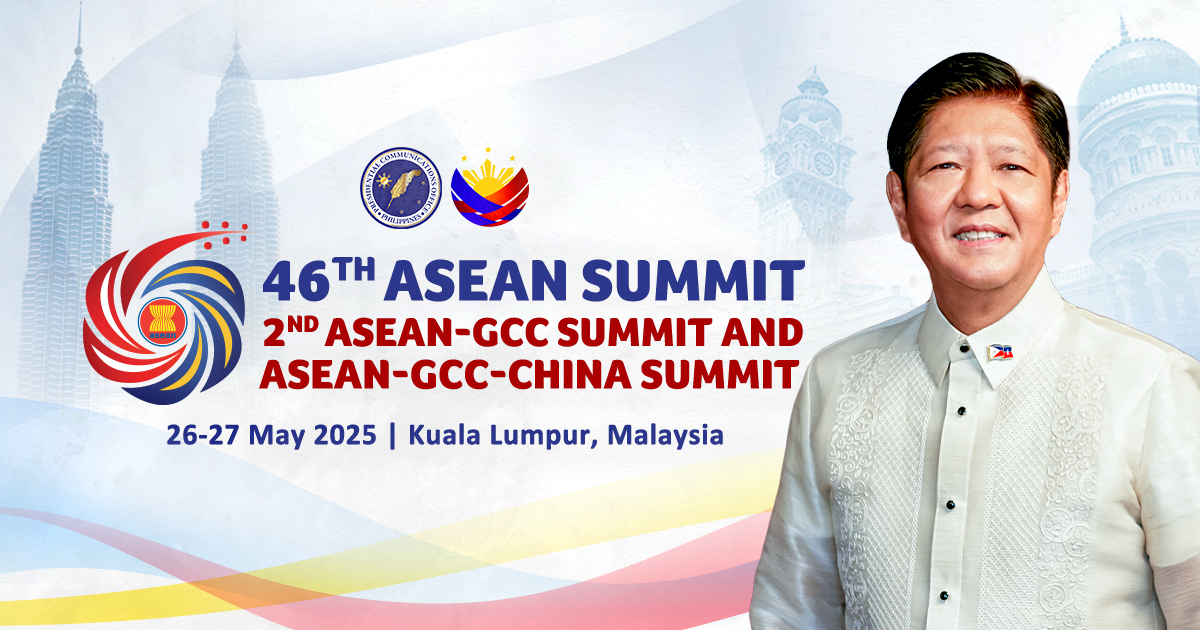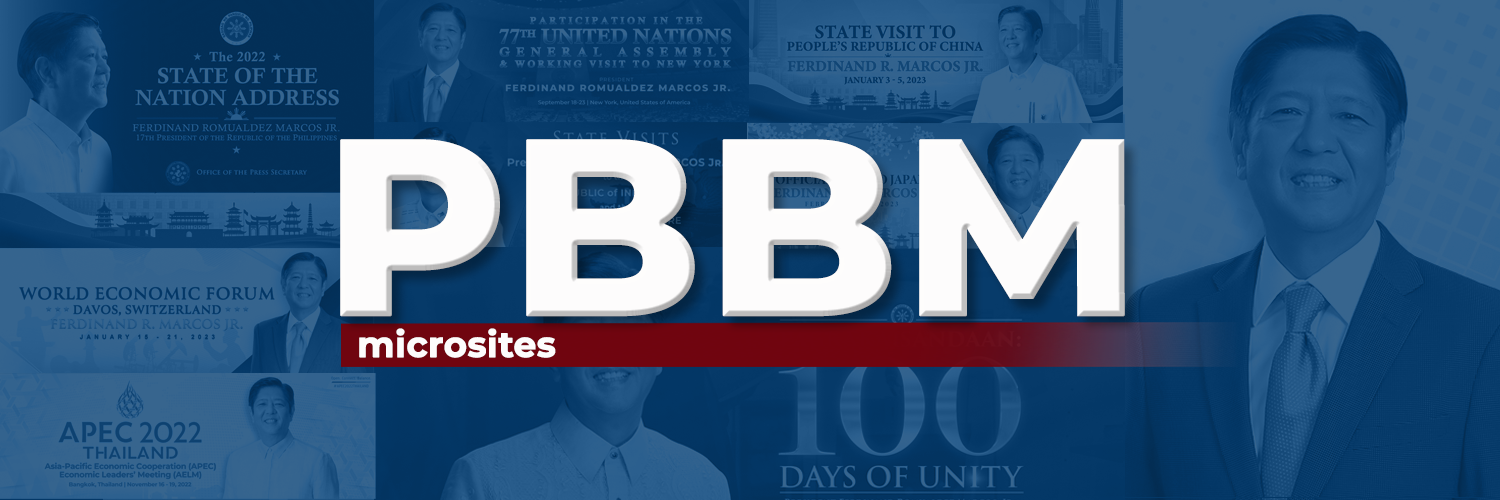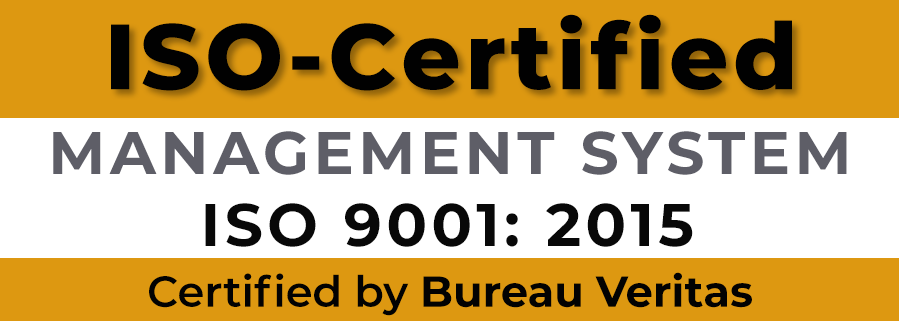September 05, 2015 – News Releases
 |
| 05 September 2015 |
APEC News Releases
|
|
|
| Mayors in Visayas region share view on development |
| (CEBU CITY, Cebu) There is a consensus among mayors in the Visayas region on the need for every community to join the march forward towards development in the Asia-Pacific region, a foreign affairs official has said.
During a press conference here Friday, Foreign Affairs Undersecretary Laura del Rosario said they try to focus on the average citizen in their Asia-Pacific Economic Cooperation (APEC) discussions, so they invited more than 20 mayors from the Visayas region to join a forum. “We invited more than 20 mayors and they discussed the challenges that affect a local city executive and of course, these are part of the things that we do in APEC,” del Rosario said. “We talked about waste, treatment of waste, conversion of waste into something good. There was a presentation on how waste recovered from the ocean could be converted into something else.” Other issues that came up were water pollution, infrastructure, culture and education, transportation, as well as technology and environment, she said. “When we talk about infrastructure in APEC, it is not just about roads and buildings. We are talking about infrastructure that you do not see. You do not see where the sewage goes,” she said. Aside from these issues, the mayors also discussed how they could improve the quality of life in cities, she said Del Rosario also highlighted the importance of technology, noting that even when people are stuck in traffic, they could work using the Internet to send emails and text messages. The APEC delegates are also looking at measures on anti-corruption, and energy efficiency and conservation. “We are also working on measures on illegal logging and trade, and all of these of course will affect small communities,” said del Rosario. “We hope that what we are doing in APEC would really be building blocks towards finding solutions to what we face in the 21st century.” Asked if the mayors committed to adopt the best practices discussed, del Rosario said they would, if they get re-elected and if they really have the heart of a public servant. But for those who are just after the money, they will not make a commitment, she said. “But I think, all of those we invited said they want to build better cities — all of them, without exception. And now, they say, ‘I know what I’m doing, I know what I need to do,'” she said. She noted that the good thing is that politicians are also afraid to be left behind. Cities will compete among themselves, and if the citizens of one city clamor for improvement, it will put pressure on their local leaders, del Rosario said. PND (as) |
|
|
| E-Commerce key to developing small, medium enterprises, says chair of APEC senior officials’ meeting |
| (CEBU CITY, Cebu) Senior officials of member economies of the Asia-Pacific Economic Cooperation (APEC) are working on measures to help small and medium enterprises (SMEs) scale up their operations and expand into new markets through e-Commerce. Chairperson of the APEC Senior Officials’ Meeting (SOM), Foreign Affairs Undersecretary Laura del Rosario, said during a press briefing here that access to technology for SMEs is among the main issues being discussed during the third SOM and Related Meetings in Cebu. She said the APEC delegates are also discussing how SMEs could be trained to become better managers so that they would be ready when they finally expand their operations to cover a bigger market through the Internet economy or e-Commerce.Apart from facilitating the growth of SMEs through e-Commerce, del Rosario said APEC economies are also addressing the financing difficulties that SMEs face. “It is not just access to technology that we are looking at, we are also looking at access to finance because without finance, SMEs would find it difficult to expand,” she explained. Del Rosario also cited a Philippine law that has a salient provision for banks to provide loans to SMEs. “On technology, the government, especially TESDA (Technical Education and Skills Development Authority) and the DTI (Department of Trade and Industry), help the SMEs scale up and do their own packaging. The DOST (Department of Science and Technology) has a very good program that helps improve the products of SMEs,” she added. Finance ministers of APEC economies will meet here on September 10 to 11. PNA (ldv) |
|
|
| Philippines should implement K to 12 program immediately, says APEC executive |
| (CEBU CITY, Cebu) The Philippines should implement immediately the enhanced K to 12 Basic Education Program to make Filipino students become globally competitive, the chairperson of the Asia-Pacific Economic Cooperation (APEC) Senior Officials’ Meeting (SOM) said.
During a media briefing here Friday, Foreign Affairs Undersecretary Laura del Rosario, said she has been pushing for an improved, expanded and innovative education in the country. “Instead of pulling back, let us push forward for all the government agencies to do what they should do, so that we will have K to 12… Education is what will carry us forward. If we stay where we are right now, we will not be able to compete,” she said. The K to 12 program covers kindergarten and 12 years of basic education. The enhanced curriculum will offer areas of specialization or electives, such as science and technology, arts, sports, tech-voc, and subjects for advanced placement. The Philippines is the only remaining country in Asia with a 10-year basic education program. Del Rosario cited the trade and services liberalization and ease of doing business initiatives among APEC economies that are believed to bring competition. “People always see it as a competition thing and of course, they are right in that sense. But at the same time, isn’t it also an opportunity for us to improve the quality of our education?” she said. Del Rosario stressed that APEC’s 21 member economies aim to create opportunities for everybody. “You have no way but to move up because the rest of the world is marching forward, and we cannot wait, we have to march along with them. And the best solution really is education,” she added. PNA (ldv) |
|
|
| Cebu govt launches ‘Exquisitely Filipino’ trade exhibit to promote local products |
| CEBU CITY, Cebu) The Cebu Provincial government, in partnership with SM City Cebu, and the Department of Trade and Industry launched on Friday “Exquisitely Filipino” trade exhibit aimed at introducing Cebu-made products to the delegates of the Asia Pacific Cooperation who are meeting in Cebu.
“I think we chose this occasion to launch ‘Exquisitely Filipino’ to dramatize the fact that in APEC we do work on integration and connectivity of economies, states and businesses,” Senior Officials’ Meeting Chair Laura del Rosario in her welcome remarks. Del Rosario said art and religion has been part of daily lives of the Cebuanos and crafts featured in the exhibit manifest these distinct Cebuano culture. “While art and religion played a role in the past, they now crossed over to the economic realm,” she said. “These products are not merely a demonstration of the Filipino skill and artistry, it has become a source of living for some families, a realization of an artist’s dream to be recognized and the fruition of SMEs’ efforts to be part of the global market,” she noted. Del Rosario also said the Aquino administration believes that to grow and to be meaningful, progress must be exclusive and this philosophy of exclusivity is imbedded in the APEC 2015 work program. The exhibit also serves as an opportunity for small and medium enterprises (SMEs) in the Philippines to participate in the regional and global markets, she added. For his part, Cebu Gov. Hilario Davide III said Cebu, which has been a trading hub in the Asia Pacific for the past 500 years, makes its location at the center of the Philippines an advantage for commerce. Cebu-made products like handicrafts, fashion accessories, furnitures, and clothes are now being sold in Asia, Europe and in the Americas, and this is a source of pride for the Cebuanos, he said. “With the opening of this ‘Exquisitely Filipino’ trade exhibit here at SM North Wing and at the Atrium, we once again have that perfect opportunity and distinct privilege to showcase the best that Cebu can offer,” Davide said. “The provincial government is fully supportive of this trade exhibit. It will boost our tourism industry and our investments. Hopefully, this will promote the best of Cebu.” Davide said he hopes the visiting delegates could choose from a variety of products that Cebu manufacturers and designers are offering and help spread the word when they return to their home countries. He expressed his gratitude to SM City Cebu, DTI, APEC Philippines 2015 National Organizing Committee, and the exhibitors for their participation. About 50 exhibitors, mostly members of the Philippine Exporters Confederation, take part in the Exquisitely Filipino exhibit, which will run until September 8. PND (as) |
|
|
| NEDA board approves P131.4 billion worth of projects for transportation, energy sectors |
| The government approved five new projects in transportation and the energy sectors totaling P131.4 billion as it underscores the importance of improving the country’s infrastructure to sustain long-term economic growth.
In a statement on Saturday, Communication Secretary Herminio Coloma Jr. said among the NEDA approved projects include the new passenger terminal building at the Clark International Airport, which will be built to meet its expansion requirements. The project, which costs P15.3 billion, will allow Clark International Airport to accommodate up to three million passengers a year. The project, to be funded by the government will include the installation of equipment, machineries and facilities. The NEDA Board also approved the Naga airport development project at a cost of P3.5 billion in Camarines Sur. The airfield will be reoriented to enable dual-approach landing and takeoff and new airside and landside facilities will be established to meet the growing tourism demand. The project will be funded through the general appropriations act. The board also approved the P64.7 billion LRT Line 6 construction. LRT 6 is a 19-kilometer elevated rail facility from LRT Line 1 extension in Bacoor that will go southward through Imus and up to Dasmarinas along the Aguinaldo highway. The project, which is expected to drastically cut travel time, is a public-private partnership (PPP) initiative. To further expand the mass transport system for the metropolis, the LRT Line 4 will be built from EDSA Ortigas to Taytay City, on an elevated rail facility covering a distance of 11 kilometers. The project will be financed through a PPP arrangement at an estimated total cost of P42.8 billion. The Department of Energy’s Access to Sustainable Energy Program was also approved by the NEDA Board on Friday. The P4.8-billion energy program, provides grant assistance for solar home systems and rural power generation facilities, as well as technical assistance to the National Electrification Administration and the Energy Regulatory Commission, and electric cooperatives. The program will be partially funded by the official development assistance from the European Union amounting P2.82 billion. The balance will be sourced from the national budget. PND (as) |
|
|
| Traffic czar not necessary, inter-agency efforts enough to ease Metro congestion, says Palace official |
| Designating a traffic czar is not necessary and the government believes that a coordinated effort among government agencies could solve the traffic congestion problem in Metro Manila, a Palace official said.
In a radio interview on Saturday, reporters asked Communication Secretary Herminio Coloma Jr about the need to appoint a Cabinet-level traffic czar to remedy the traffic congestion problem in Metro Manila. Coloma told dzRB Radyo Ng Bayan that in the executive branch, Cabinet Secretary Jose Rene Almendras acts as the coordinator among government agencies. “Mainam siguro tingnan natin ang sitwasyon at unawain natin na sa mga malalaking problema katulad nito, ang mahalaga ay ang unified action and integrated planning, at effective implementation ng mga action plans,” he said. “Hindi mahalaga kung sino ang boss dahil ang boss naman talaga rito ay ang mamamayang Pilipino na pinaglilingkuran ng pamahalaan.” “‘Ang tunay na kapangyarihan dito ay manggagaling sa will power ng sama-samang pagkilos ng mga mamamayan.” What’s important is how the government coordinates its efforts with the other stakeholders like civil societ, the business community, port users, road users, and the general public, he added. “Lahat po tayo ay sangkot at may lahok po tayo diyan sa pagresolba ng problema.” On Monday, the Philippine National Police’s Highway Patrol Group (HPG) will be the lead enforcer of traffic rules to remove chokepoints along EDSA. The PNP will concentrate on easing six chokepoints in EDSA such as Balintawak, Cubao, Ortigas, Shaw Boulevard, Guadalupe, and Taft Avenue going to Roxas Boulevard in Pasay. The Department of Public Works and Highways has started its work, Coloma said, putting up markers and concrete dividers, for dedicated bus lanes. Metro Manila Development Authority and the DPWH are already clearing sidewalks to remove obstructions and barriers. MMDA traffic enforcers, who previously manned EDSA, will be transferred to Roxas Boulevard, C-5 and other major thoroughfares, Coloma said. Some MMDA traffic enforcers will be retained in EDSA to help the Highway Patrol Group in decongesting the identified major chokepoints along the major thoroughfare. Also, traffic enforcers from the Land Transportation Office as well as from Land Transportation Franchising and Regulatory Board will assist in managing EDSA. (as) |
|
|
| Government outlines El Niño action plan for Agriculture sector |
| Dispelling public fears on an impending severe drought, Malacanang said, the Department of Agriculture (DA) has a comprehensive El Nino response plan in case the weather disturbance affects the country.
In a radio interview, Communication Secretary Herminio Coloma Jr said the DA’s El Niño action plan has two features: production support and water management. The plan also includes an information and communication program or information education program, Coloma told dzRB Radyo ng Bayan on Saturday. The plan has two objectives: maximizing and optimizing production in non-threatened areas, and saving vulnerable areas through appropriate irrigation intervention or crop shifting using short gestation crops. Because not all agriculture areas will be hit by El Niño, the DA will concentrate on enhancing production in non-affected areas. For areas that will be affected, the DA will irrigate the fields and encourage farmers to plant short gestation crops for them to immediately harvest. As soon as El Nino is over, the DA will rehabilitate vulnerable areas for future use. For water management, the DA, in coordination with the Philippine Air Force will conduct cloud-seeding operations. “‘Yung ‘intensified implementation of alternate wetting and drying, ito ang mga istratehiya nila sa water management,” he told Radyo ng Bayan. “Mayroon ding provision of open source pumps at installation of solar and wind pump irrigation systems for high-value crops. Kaya mayroon ding mga alternatibong irrigation systems, hindi lang mga water-based.” Also part of El Niño mitigation efforts is the distribution of high-quality seeds for rice and corn farmers. They will also be supplied with mungbean, peanut, soybean, sweet potato and cucurbits as alternate crops. “Pag-iibayuhin din ang pest surveillance and monitoring at magpro-provide din ng soil ameliorant,” Coloma said noting that the initiative also covers livestocks and fisheries. The DA will provide livestock buffer feed stocking, as well as veterinary drugs, and will advise growers to plant drought-resistant forage for animal feed. For the fishery sector, the DA will dispense fingerlings to replenish the projected production losses. El Niño is expected to hit the country in the third quarter of this year until the first few months of next year. PND (as) |
|
|
| Palace welcomes high public awareness on West Philippine Sea issue |
| The Palace welcomes the high consciousness of Filipinos on the West Philippine Sea dispute issue, noting it will strengthen the country’s position as it pushes for a peaceful resolution based on international law.
“A unified citizenry is needed in terms of asserting our national position on the need to respect our maritime entitlements, ayon doon sa international law, ang UN (United Nations) Convention on the Law of the Sea,” Communication Secretary Herminio Coloma Jr said in a radio interview Saturday. “Kaya para sa atin, ito ay isang positibong development—ang kakitaan natin ng mataas na kamalayan at kamulatan ang ating mga mamamayan.” The government is actively conducting an information dissemination campaign to raise awareness on the issue, he said. Coloma also said that the Department of Foreign Affairs, in cooperation with the Philippine Information Agency, has been holding regional and provincial information fora. The DFA is using the three-part documentary produce by the government regarding the West Philippine Sea. Asked if the Philippine government hopes to see Chinese President Xi Jinping during APEC Leaders’ Meeting in November, Coloma said they expect all the leaders from the 21-APEC member economies to attend the meetings in Manila. The Philippines filed an arbitration case against China in the international Arbitral Tribunal in connection with its claim in the West Philippine Sea. While China is not participating in the case filed by the Philippines, it has released diplomatic statements claiming to be open to settling the dispute through bilateral negotiations. PND (as) |
|
|
| APEC members wants to match trade in services with trade in goods |
| (CEBU CITY, Cebu) Member economies of the APEC want to level the trade in services with trade in goods as the economic bloc sees a disparity in trade in goods compared with the trade in services in recent years, APEC Secretariat Executive Director Alan Bollard said on Saturday.
“The APEC region is very advanced on trade in goods, but it’s actually not very advanced in trade in services,” Bollard said in a press conference at Bayfront Hotel here. “And that clearly is the big push for the future. So this year we’ve had a lot of discussions on that and that’s continuing in meetings now.” APEC member economies are trying to work out how regulation makes it harder to trade in services, how to design policy, and find ways to identify the best practices within the APEC region for trade in services. The delegates are also discussing how to encourage the region’s supply chains to develop with services, he said adding they are organizing a database on how that works around the region. Another focus is promoting good trade in the Asia Pacific region, he said. “We’re actually also spending more time now and we are concerned about bad trade, trying to rid the region of illegal logging trade, focusing on international money laundering, corruption and terrorist financing,” he said. Another issue is building resilient communities, a theme crafted by the Philippines for this year’s hosting. “Philippines has clearly lead the way, having learned to cope with a number of natural disasters over the years,” Bollard said. Discussions in APEC tackle disaster risk financing, disaster insurance, quick movement of equipment across borders during natural disasters, and ways to share information and experiences around the region. Also during the meeting in Cebu, there’s another push among APEC members on how to tackle urbanization and build better cities, he said. PND (as) |
|
|
| APEC Executive Director highlights changes in APEC over the years |
| CEBU CITY, Cebu) The Asia Pacific Economic Cooperation (APEC) has changed a lot since it started 26 years ago, APEC Secretariat Executive Director Alan Bollard said on Saturday.
“It changed quite a lot and when we started at the end of the Cold War. It was one of those periods in history when things were changing. And the big focus was on tariffs and some other border restrictions like non-tariff barriers,” Bollard said in a press conference at the International Media Center in Bayfront Hotel. Today the focus of APEC discussions is how to carry out regulatory reform, ease of doing business, structural changes, business facilitation, (how to) make it easier to start up businesses and penetrate other markets. It changed again with the economic bloc seeing a more enhanced supply chain coming in, he said. The development of supply chains is interesting for the Philippines because it gives small businesses a chance to enter trade, which they couldn’t generally do in the past “There’s a lot more on that, we’re also looking at bad trade as well as good trade. And we’ve been looking at some health issues like MERS, avian bird flu, and all of that,” he said. Today, another focus of APEC is how to connect infrastructure, which is important for the region. There are also major interest in finance infrastructure and people mobility, he said. The APEC Business Advisory Council (ABAC) with its chair Doris Magsaysay Ho, and the Philippine group, are very active in APEC, according to Bollard. One of the ABAC’s interesting proposal is how to make it easier for people to move around the region. Currently, there is an active program for business people– the APEC travel business card, Bollard explained. APEC is starting to do similar arrangements for students who are traveling under scholarships based on some other agreed set up. The “Earn, Learn, Return,” proposed by ABAC, will allow people to travel and after earning and learning, they return to their home country. PND (as) |
|
|
| Study on realization of Asia Pacific free trade area underway-APEC exec |
| CEBU CITY, Cebu) The Asia Pacific Economic Cooperation (APEC) member economies have started drafting the collective strategic study on issues related to the eventual realization of the Free Trade Area of the Asia-Pacific (FTAAP) that aims to promote and advance regional economic integration.
“We agreed to enter a strategic study at the end of last year, that’s now under way… We put out the work plans for study,” said APEC Secretariat Executive Director Dr. Allan E. Bollard in a press briefing here. Bollard said the drafting is being carried out by an FTAAP Task Force led by China and the United States. The FTAAP was endorsed by APEC Leaders in a Beijing Roadmap last November. He said the draft version of the study will be submitted to APEC trade ministers early next year, while the final version will be reported to APEC Leaders when they meet in Peru by the end of 2016. Peru is next year’s APEC host economy. “It (FTAAP) is where the whole region might go possibly after a TPP (Trans-Pacific Partnership) and Regional Comprehensive Economic Partnership (RCEP), a set of arrangements, that could be the next big step,” he added. The US-led TPP, the ASEAN-based RCEP process and the Pacific Alliance are the three proposed pathways to the FTAAP. APEC economies believe that the FTAAP has a big potential to boost economic growth in the Asia-Pacific region. Once in place, it could dwarf all other economic arrangements ever made given its size and scope. The 21 APEC member economies control half of the world trade and account for 60 percent of the global economy. They are home to nearly three billion consumers in some of the world’s most vibrant economies. PNA (ldv) |
|
|


















